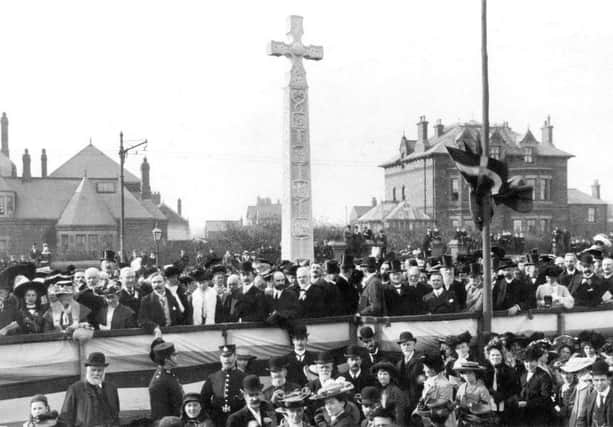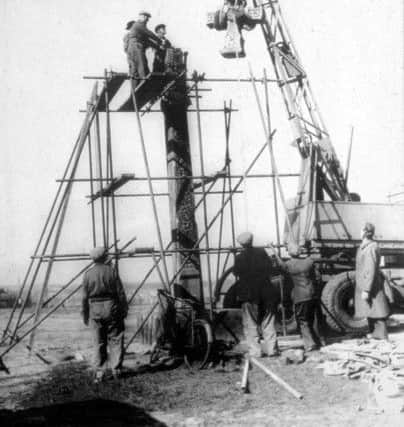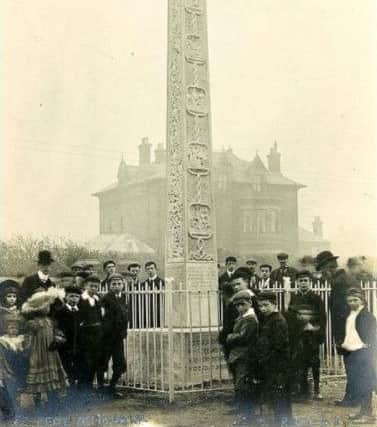Evocative 112-year-old photos from a tribute to one of Sunderland's most illustrious sons


This impressive monument is more than seventeen feet high and quite a landmark.
The cross is not easy to miss but just how many Wearsiders and visitors actually stop to read and admire it?
Advertisement
Hide AdAdvertisement
Hide Ad

Today, we take a closer look at the tribute to with the help of Philip Curtis and the excellent team at the Sunderland Antiquarian Society.
It was 1904 when the cross was first unveiled.
But its very building was a story in itself.
It was erected in 1904 following a movement which had started some time earlier.


Its origin came out of plans to erect a memorial to Caedmon in Whitby.
Officials in the Wearside area felt that a structural memorial of some kind should also
commemorate the life and work of Bede.
Advertisement
Hide AdAdvertisement
Hide AdIt was in January 1903 that Sunderland, together with St Peter’s Church, took steps to provide some kind of memorial to its famous son.


Bede was a monk at the monastery of Saint Peter at Monkwearmouth and at Saint Paul’s in Jarrow.
The scheme to to commemorate his life through a memorial had very wide support.
Because of that, a committee was formed under the chairmanship of the then Mayor of Sunderland, Alderman H. J. Turnbull.
Its purpose was to help with voluntary subscriptions.
Advertisement
Hide AdAdvertisement
Hide Ad

This quickly caught the imagination of Wearsiders and very soon donations began flooding in.
The list of subscribers was long with the largest donation being from two ladies, Mrs Barnes of Whitburn and Mrs Talbot who each gave £10.
Further donations of £5 and five shillings were given by many of the most influential residents of Sunderland, including landowners and shipbuilders.
It is interesting to note that contributions included £2.11s 2d from the students of Bede College, Durham as well as £1. 4s 0d from the Pupil Teachers’ Centre of Sunderland.
Advertisement
Hide AdAdvertisement
Hide AdThe local Girls’ High School got in on the act when they donated £2 which was from the proceeds from a concert.
The eventual total cost of the memorial was almost £500 and was all covered by subscriptions.
A decision was made that the designer should be Charles Clement Hodges.
Mr Hodges, who was from Hexham, charged £400 for selecting the stone as well as supervising the carving and the erection.
Advertisement
Hide AdAdvertisement
Hide AdIt was also agreed that the memorial should take the form of a tall cross worked in Northumbrian freestone.
Lord Armstrong allowed stone to be taken from the finest rock in his private quarry at Cragside.
Mr Hodges appointed G.W. Milburn of York to be the sculptor and work out the designs on the 17ft 5ins shaft.
In the end, the design showed five scenes which are illustrated in the panels which are enclosed by serpents.
Advertisement
Hide AdAdvertisement
Hide AdThe first shows Bede being received at Jarrow, the second Benedict and Sigfrith, third the Codex Amiatinus, fourth Bede writing his history and finally, Bede’s last moments.
On the south side of the stone, there is the carving of the heads and busts of friends and associates of Bede, and they included Benedict and Ceolfrith.
Once the final masterpiece was ready, the next stage was to have the memorial erected.
The unveiling ceremony took place at 12.30pm on Tuesday, October 11, in 1904.
Advertisement
Hide AdAdvertisement
Hide AdIt happened on a warm, bright day in front of an estimated crowd of 5,000 people.
The party was led by the Archbishop of York who robed in ‘Cliffside’, the home of Sir John Priestman, which then stood directly across the road from the monument.
The unveiling of the memorial by the Archbishop was greeted with loud cheering from the crowd and the playing of The Last Post by members of the Royal Artillery.
The principal guests then all made their way to the Town Hall in Fawcett Street for a celebration lunch (prepared by Mengs) and for speeches.
The Archbishop in his speech referred to Sunderland as ‘this great city’.
It was a prophetic remark indeed – he obviously knew something that the rest did not.